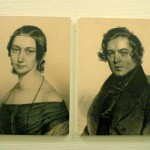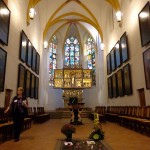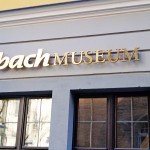
If you have ever wondered where the beautiful music of Johann Sebastian Bach, Felix Mendelssohn and Robert Schumann came from, the answer would be this one: Leipzig. Located 200 km south of Berlin, the magical (and musical) town of Leipzig found its artistic height in the 18th and 19th centuries, as it became one of Europe’s most prominent printing and music centers. It was indeed there that Bach lived and worked as a choirmaster in the St. Thomas Church, the chorus of which, the Thomanerchor, is to this day, I came to understand, one of the world’s finest. It was also in Leipzig that a century later Felix Mendelssohn was born and lived, or Robert and Clara Schumann spent four years of their lives. Not to forget that it is the home of the famous Leipzig University – one of the world’s oldest and the second oldest in Germany, the alumni of which include, but are not limited to Goethe, Wagner, Nietzsche, and Germany’s current Chancellor – Angela Merkel.
I had the chance to visit this magical town around the end of October this year, through a trip organized by ECLA of Bard’s Residential Life Coordinator Zoltan Helmich. The trip lasted only one day – a time which might seem too short, but in reality is more than enough to follow the “music trail” of Leipzig, and visit four of its main attractions – the St. Thomas Church, the Bach Museum and the houses of Mendelssohn and the Schumanns.
I was thirteen years old when my family and I immigrated to the United States, having just graduated from middle school in Bulgaria. In the three years I spent in that particular school, I had a wonderful music teacher, who inspired me greatly by teaching the class not only music, but also musical history, detailing the biographies of some of the greatest composers of the Baroque, Classical and Romantic eras. Bach, Mendelssohn and Robert Schumann were among those composers. To be at the places where “the magic happened,” the places where some of the greatest pieces of music were composed, was one of the most wonderful and inspirational experiences I have had to this day. I could feel the echoes of those past music classes, and could still hear the stories my teacher told us of the lives of the people who once walked these halls. And this happened especially in the house of the Schumanns where, as the descriptions stated, the couple spent the four happiest years of their married life – a life filled with challenges, suffering, and tragedy, but also true love. A story I have always loved the most of all. Somehow, as I stood in their reception hall, near the large, black pianoforte, this unique love story became real.
Although the day of our trip happened to be a Sunday, I came to find out that my group and I were not the only visitors of those places—especially in the St. Thomas Church and the Bach Museum—for Leipzig is visited by thousands of people every year. Yet, I would like to see myself as someone different than the everyday museum visitor, for the museums I saw were not just any museums for me. They were once the homes of real historical figures, and I have the privilege to have been previously familiar not only with their music, but also with their life stories. Apart from showing and teaching—the first and foremost function of any museum—those places put me in touch with a part of my past I have not been in connection with for many years, thus making this visit more special to me.
Thus, if you happen to visit Berlin, make sure to take a weekend train to Leipzig, even if only for a few hours. It would be, I think, a musical and magical experience that is worth the trip.





